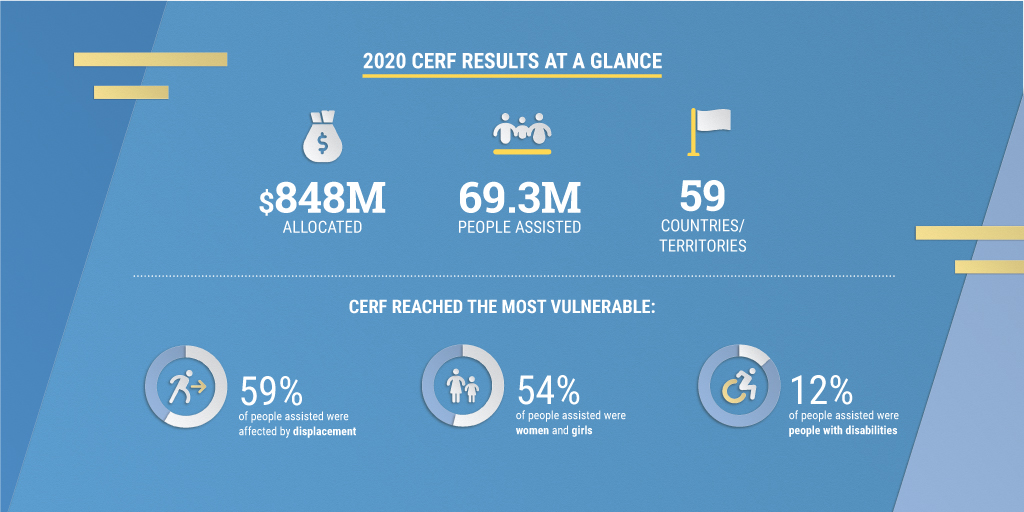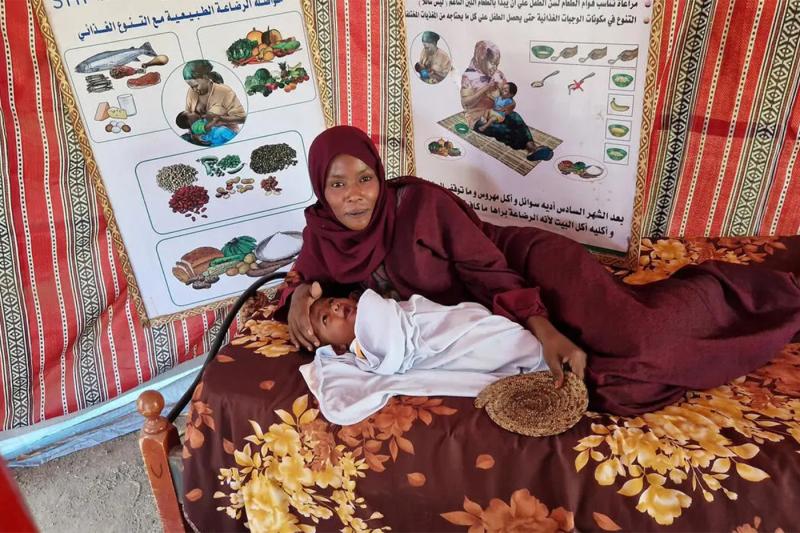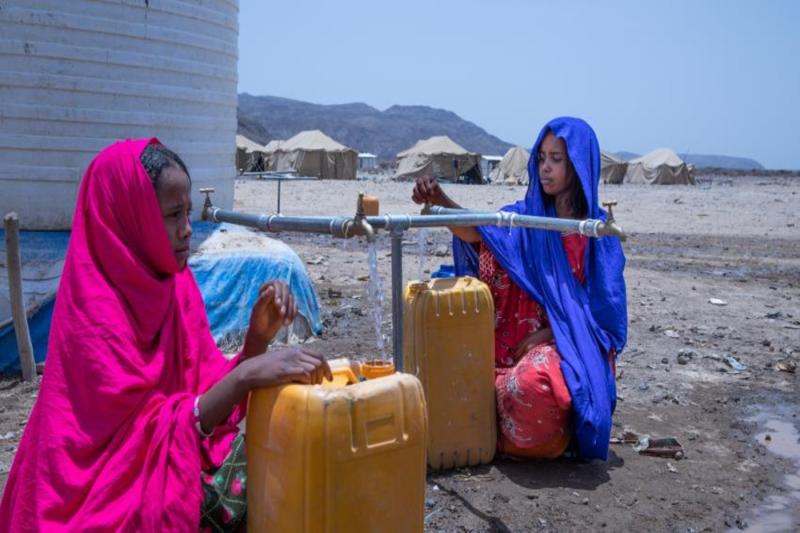
CERF 2020: The UN’s global emergency fund helped the world's most vulnerable people through unprecedented crises
The 2020 CERF report shows how the Fund worked to meet the challenge of a global pandemic and unprecedented humanitarian need caused by conflict and natural disasters.
In 2020, the Central Emergency Response Fund (CERF), the United Nations' global emergency response fund, released a record USD 848 million to provide nearly 70 million people with life-saving assistance and protection in 59 countries, its annual report details.

CERF contributions from 56 Member States, regional local authorities, one private foundation and several individuals enabled timely pandemic response for some of the world's most vulnerable people.
“As people around the world continue to grapple with the COVID-19 pandemic, the UN’s Central Emergency Response Fund is an expression of solidarity. I have seen the power it has to save lives and prevent suffering. Donor support for CERF is an investment in progress and in hope.”
- António Guterres, United Nations Secretary-General
CERF was agile and innovative, ensuring money was disbursed faster than ever to UN agencies and, for the first time, directly to INGOs at the onset of the pandemic.
CERF was strategic, channelling money to people before disasters struck – for example, enabling anticipatory action ahead of floods in Bangladesh.
CERF strengthened its support to four priority areas that are often underfunded: record levels of funding went to programmes specifically for women and girls and people with disabilities; ensuring children living in protracted emergencies receive education; and promoting protection and dignity for all people affected by crises.
For example, CERF funding helped ensure refugee camps in Jordan are equipped with accessible sanitation facilities; that women could safely give birth in Yemen with adequate medical and psychosocial support; and that vulnerable people received timely and appropriate COVID-19 information.
Demonstrating the difference that it makes to the lives of people caught in humanitarian crises across the world, CERF allocated $80 million to address rising food insecurity in Africa and the Middle East, and $25 million to prevent and respond to gender-based violence in humanitarian settings.
As the Emergency Relief Coordinator and Under-Secretary-General for Humanitarian Affairs, Mark Lowcock, noted, "CERF is a success story in the international community. No other fund enables humanitarian responders to act as rapidly and at scale when emergencies strike. No other fund embodies the spirit and potential of the United Nations to respond in times of crisis."
CERF is one of the fastest and smartest ways to help people affected by crises. The fund enables timely, effective and life-saving humanitarian action by UN agencies and others to kick-start or reinforce emergency response anywhere required. Allocation decisions for underfunded emergencies are based on detailed analysis of more than 70 humanitarian indicators and wide consultation with stakeholders.
Since its creation by the UN General Assembly in 2005, and with generous contributions from 129 Member States and Observers, as well as other donors, CERF has assisted hundreds of millions of people with over $7 billion across more than 100 countries and territories. This includes more than $2.3 billion to underfunded crises.


